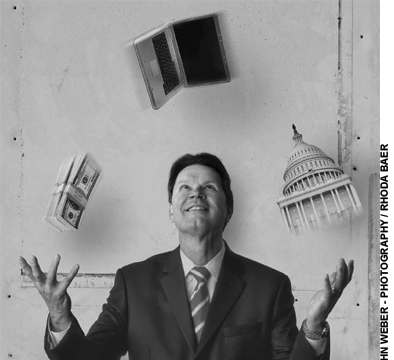Can research influence policy? Most cynics think not, but when studies are of high quality, they can make a difference—at least in the long run.
Scorned for years both for its poor quality and its policy irrelevance, education research has arrived front and center, both in academia and in Washington. Much of the credit must go to Grover Whitehurst, who served for eight full years as George W. Bush’s director of the Institute of Education Sciences.
Whitehurst rightly insisted, again and again, that valid information on the impact of an educational intervention can only be obtained through experimental research, most preferably by using a randomized field trial (RFT). The idea is simple but powerful. Use a lottery to create two groups, give the intervention to one group but not the other, and see if the group enjoying the intervention changes relative to the comparison group.
As a result of the growing use of this method, there are a number of excellent new studies pregnant with policy implications. Take, for example, two recently released studies of the impact of professional development for teachers that were funded by the IES. When new superintendents come to town, they can propose no reform more popular than offering additional training to teachers already in the school system. Teachers like the idea, because they can attend workshops instead of teaching classes, while the public is led to believe that students will learn more as a result. But two RFTs funded by IES during Whitehurst’s tenure, one on professional development in reading, the other in math, show the same thing: even prolonged, high-quality, in-service professional development programs for teachers produce nothing in the way of gains for students. Together, the two studies may save taxpayers lots of cash—and give students more face time with their classroom teachers.
Even more significant is the recent release of the long-delayed Head Start RFT, which shows that any student gains in learning are gone by the end of first grade. Billions and billions of federal dollars have funded Head Start over the years, and billions more are being proposed for a universal pre-school program. Now that an RFT has shown Head Start yields few, if any educational benefits, the pre-school lobby is shaking in its boots.
So what does work? From India, we learn from an RFT conducted by Esther Duflo, an economist at the Massachusetts Institute of Technology, that if teachers are asked each school day to record a video of themselves in their classroom, the teachers are less likely to skip class– and students will learn more. For this and other similar research she just won this year’s prestigious Clark Medal.
Why does a video camera make such a difference? On any given day in a typical rural province in India, 25 percent of the country’s high-paid, unionized teachers skip class. Karthik Muralidharan, in still another RFT, shows that not even a merit bonus can get India’s teachers to show up for class, though it does get them to teach more effectively when they are present. Merit pay makes a difference, but a video camera might do just as well.
We have also learned recently that paying students to learn often doesn’t work out well. Roland Fryer has been running a variety of experiments on the benefits of paying kids to study harder. For the most part, money does not seem to have an impact. Apparently, students did not understand they needed to study day-in-and-day-out in order to score well on those end-of-year tests.
When RFTs show that so much doesn’t work, it is all the more interesting that most RFTs show that school choice does. Patrick Wolf’s IES-funded evaluation of the Washington, D. C. school voucher program had a strongly positive impact on student learning in reading, though not in math. And two charter school studies, one in Massachusetts, the other in New York, showed clear benefits from the formation of charter schools.
The voucher evaluation did not save the Washington program from the political ax. Head Start will undoubtedly survive. Unions will still fight merit pay, and in-service training programs for teachers will not disappear overnight. But the proposal to pay kids to learn is falling by the wayside, and the two RFTs of charter school effectiveness helped sustain political support for the innovation.
Education researchers are making waves, not least because Grover Whitehurst put the IES on a new track. It’s time to give him two cheers, even three, if his IES successors ignore current special-interest-group pressures to kill RFTs. Those special interests, more than anyone else, know the power of high-quality research.




